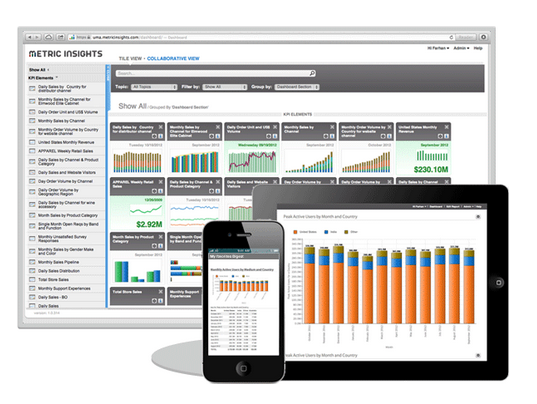Social Data Analytic Platform - Capabilities Pt. 1
 Monday, November 25, 2013 at 8:56AM
Monday, November 25, 2013 at 8:56AM There are many vendors in the social data analytic platform (SDAP) space. Each brings a somewhat unique set of features and functions to the game. Early entrants have been focused primarily on the needs of marketing and public relations teams and often focused on only monitoring the social landscape. As a company's social data analytics strategy evolves from "watching" to a more widely integrated approach a new set of capabilities is required to meet the needs of enterprise users. Platform functionality will enable a wide range of analytic and functional capabilities so its important to make sure the solution you choose for your company has the platform functionality required to support action, collaboration, integration with enterprise data and applications and can support advanced analytic functions.
Platform Functions
Alerting and Workflow - Social Data Analytic Platforms are gaining traction within enterprise companies and its critical as more stakeholders become involved that the platform help these professionals to understand the insights that are critical to their company and take faster action. Alerting and key performance indicator (KPI) driven metrics have long been included in traditional business intelligence solutions and they are now finding their way into SDAP solutions. Receiving an email alert or text message is a useful way to interact with social data insights but its even more successful if the platform combines alerts with workflow functionality that allows users to design business process functions based on the alerts or for alerts to automatically kick off processes based on thresholds and KPI's.
Collaboration - As much as KPI's and Alerts help users to take action; collaboration is a key function to adding value to workflows and decisions. Most vendors in the social data analytic space are still struggling to provide highly useful collaborative capabilities. As with traditional business intelligence bringing a diverse set of skills and insights to a business problem will most often result in a better decision for the company overall this is true with social workflows and decisions.
Integration / API's - SDAP solutions can't impact the enterprise unless they can be highly and seamlessly integrated with existing analytic platforms and data sources. Many leading business intelligence vendors are incorporating social data analytic capabilities into their BI platforms as a strategy to bring the data and the decision making to a single integrated platform.
Natural Language Processing (NLP) - NLP combines linguistics and artificial intelligence (AI) to enable computers to understand human or natural language input. The business value of NLP is probably obvious. Social data is often information directly created by human input and this data is unstructured in nature making it nearly impossible to leverage with standard SQL. NLP can make sense of the unstructured data that is produced by social data sources and help to organize it into a more sturcutred model to support SQL based queries. NLP opens the door for sophisticated analysis of social data and supports text data mining and other sophisticated analytic functions.
These four platform function areas are key foundations for the analytic insights most companies will need to leverage with thier social data analytic platform. Alerting, Workflows, Collaboration, integration and API's and natural Language processing engines are important building blocks for strong platforms that strive to support enterprise class needs.
Look at part 2 of this post for details on the type of analytic functions that will help deliver success with social data.



